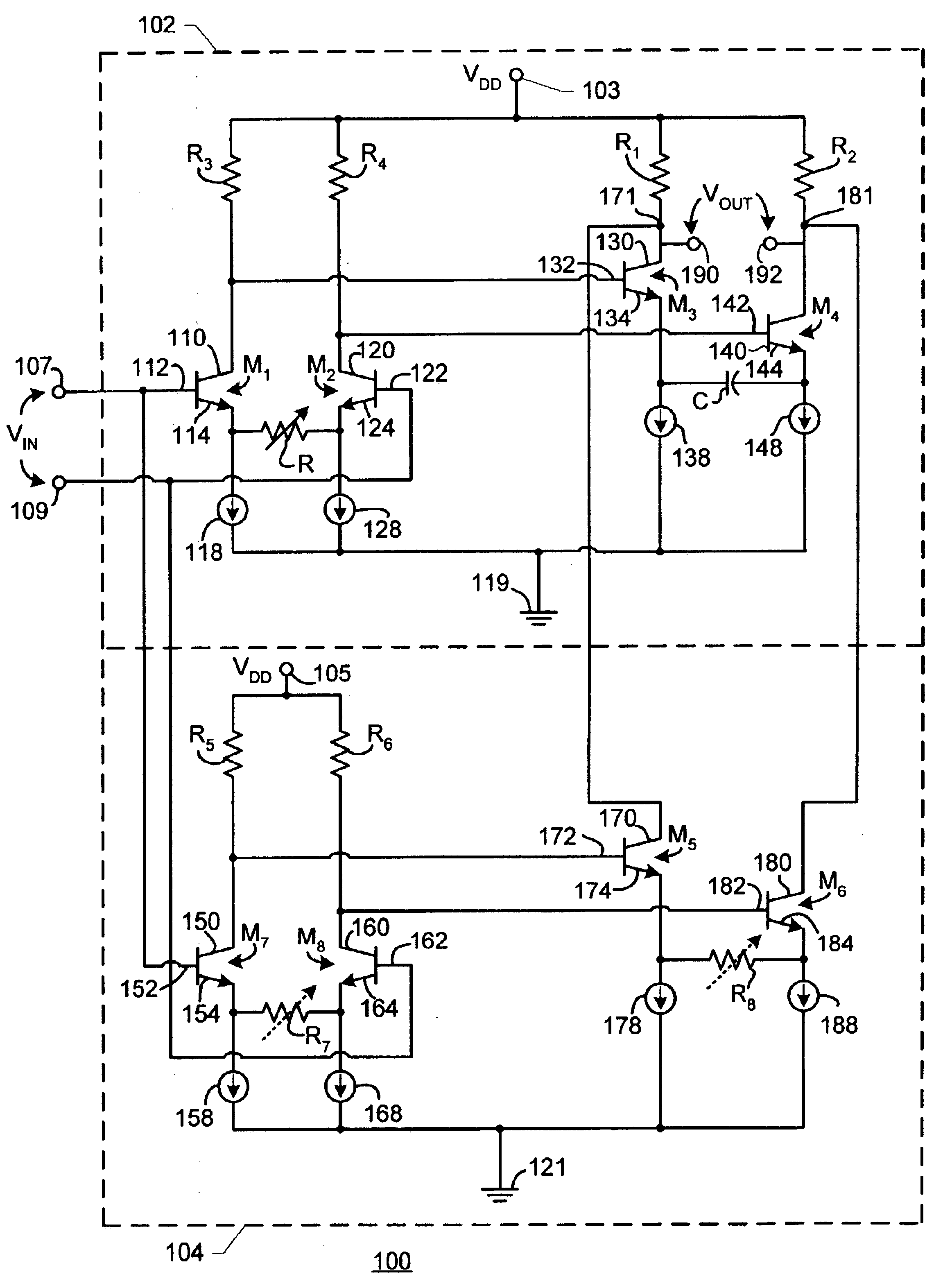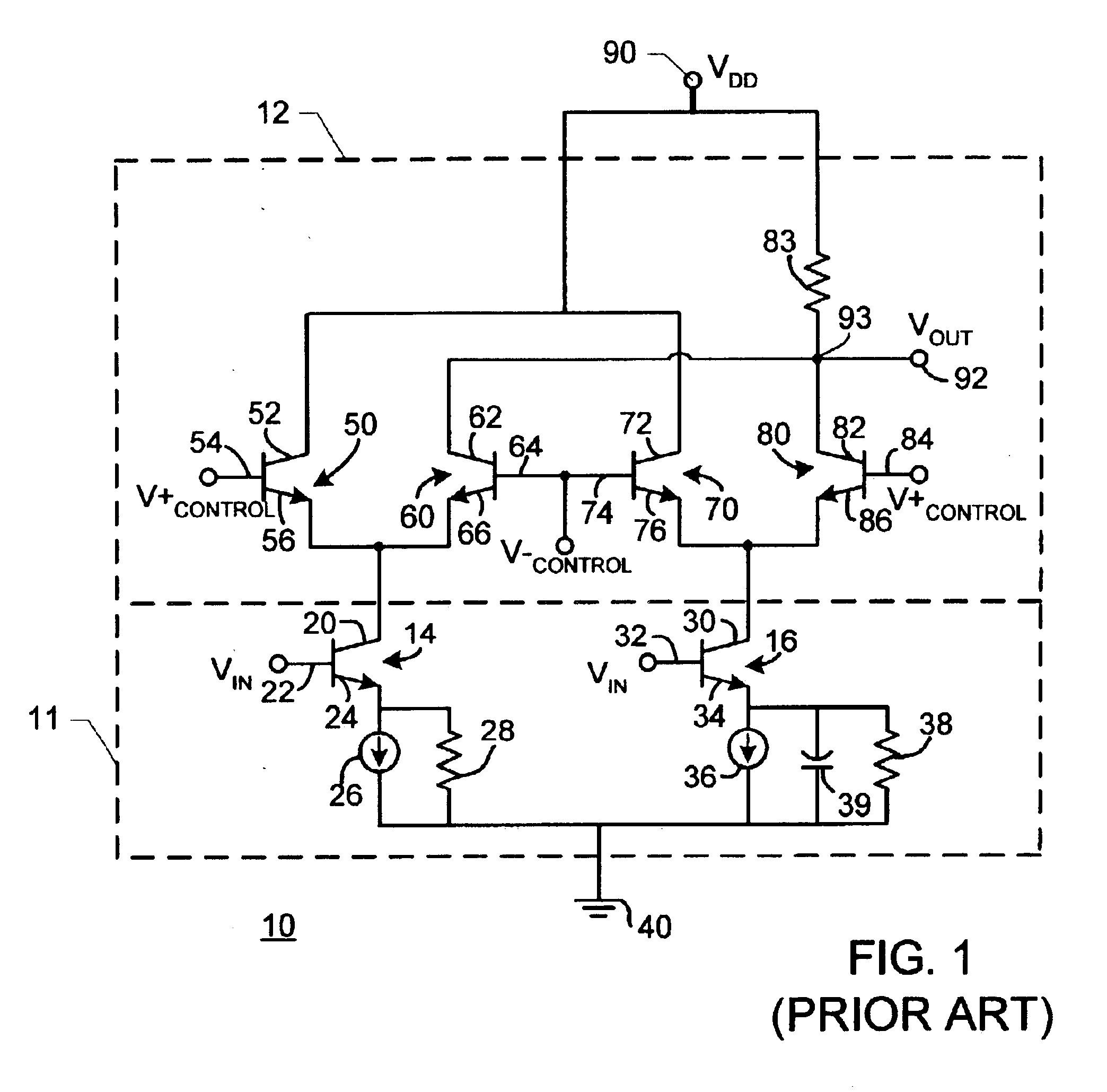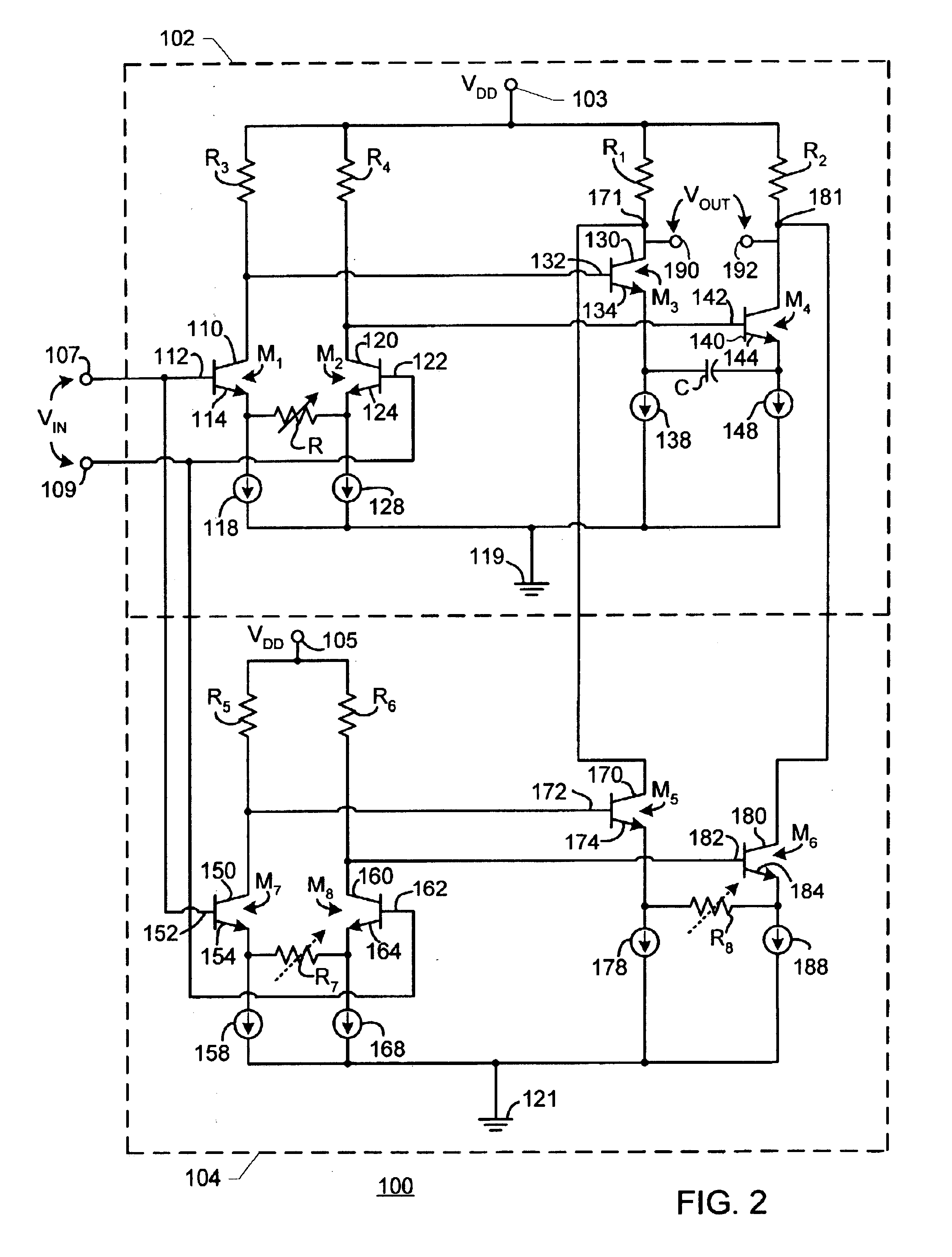Apparatus and method for equalizing received signals
a technology of equalizer circuit and received signal, which is applied in the direction of pulse technique, pulse manipulation, baseband system details, etc., can solve the problems of signal distortion, distortion generally occurring, and signal distortion often manifesting, and achieve acceptable linearity, advantageous use, and high speed
- Summary
- Abstract
- Description
- Claims
- Application Information
AI Technical Summary
Benefits of technology
Problems solved by technology
Method used
Image
Examples
Embodiment Construction
[0019]FIG. 1 is a simplified electronic schematic diagram of an exemplary prior art equalizer apparatus. In FIG. 1, an equalizer apparatus 10 includes a constant transconductance gain section 11 and a variable gain section 12. Variable gain section 12 employs differential control signals V+CONTROL, V−CONTROL to control gain variance. Constant transconductance gain section 11 includes transistors 14, 16, current sources 26, 36, resistors 28, 38 and capacitor 39. Variable gain section 12 includes transistors 50, 60, 70, 80 and resistor 83. Transistor 14 has a collector 20, a base 22 and an emitter 24. Collector 20 is coupled with voltage-bias section 12. Emitter 24 is coupled with ground 40 via a current source 26 in parallel with a resistor 28. Transistor 16 has a collector 30, a base 32 and an emitter 34. Collector 30 is coupled with voltage-bias section 12. Emitter 34 is coupled with ground 40 via a current source 36 in parallel with a resistor 38 and a capacitor 39. An input signa...
PUM
 Login to View More
Login to View More Abstract
Description
Claims
Application Information
 Login to View More
Login to View More - R&D
- Intellectual Property
- Life Sciences
- Materials
- Tech Scout
- Unparalleled Data Quality
- Higher Quality Content
- 60% Fewer Hallucinations
Browse by: Latest US Patents, China's latest patents, Technical Efficacy Thesaurus, Application Domain, Technology Topic, Popular Technical Reports.
© 2025 PatSnap. All rights reserved.Legal|Privacy policy|Modern Slavery Act Transparency Statement|Sitemap|About US| Contact US: help@patsnap.com



